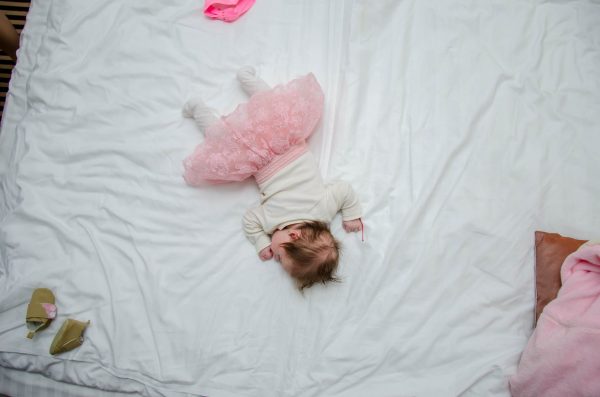Following on from our previous blog “12 Common Potty Training Problems (and Solutions!),” we are going to look into the top 5 most common potty training problems to delve a little deeper. Why are these the most common problems and what can I do to help my toddler overcome them? Here is everything you need to know to conquer the 5 biggest predicaments when it comes to potty training.
#1 They will not go in the potty
Why it’s a problem: children can typically be physically ready to use the potty, meaning that they recognise when they need to use the potty, but they may not be emotionally ready. Your child may have no desire to use the potty or completely resist it. This in itself is not a problem but starting before they are ready can be.
How you can conquer it: all you can do is wait until they are ready but in the meantime, you can make the potty a very positive and engaging experience. Here are a few tips:
- Read potty books to them so they understand what potty training is all about.
- Let them play with a drink and wet doll.
- Bring them into the bathroom when you use the toilet.
- Look out for signs that they are ready (when they show interest, if they stop playing and hide when they fill their nappy or when they ask you for a clean one).
- When they are ready, start potty training! Read our blog “How to Master Potty Training: the Ultimate Guide‘ if you need help.

#2 They will use the potty but only when I place them on it
Why it’s a problem: toddlers who need you to remind them or physically place them on the potty are more likely to have accidents when you transition to underwear. This is normal in the early stages of potty training as your child needs to learn to recognise their body signals and recognise them in time to get to the potty. This, however, can become a problem as they get older as it might just be laziness.
How you can conquer it: it’s normal to have a few accidents but if it happens regularly, try these potty training tips:
- Ask them regularly if they need to use the potty.
- Take them to the potty when they wake up, before starting activities, before nap time and before bedtime to get them into a routine.
- If they need to go, walk them to the potty but start waiting outside.
- Encourage them to be a big boy or girl and go to the potty themselves.
- Introduce a reward system if they go by themselves, such as a sticker, a new toy, or a benefit that they only get for special occasions.
#3 They will pee in the potty but not poo
Why it’s a problem: some children resist pooing in the potty or toilet as they are terrified of the feeling. To them, it can feel like they are losing part of their body and when they do it in the toilet, the sound of it falling into the water, the water splashing on their bottom or the fear of falling in is enough to make them hold it in. This can lead to constipation and that will lead to further complications.
How you can conquer it:
- If they are not pooing in their nappy either, check with the doctor that they are not constipated.
- If they are pooing in their nappy, but not the potty, be patient and wait until they are ready.
- Help them relax by talking, singing songs, and bringing toys into the bathroom to distract them.
- Let them poo in their nappy but explain to them that eventually, they will need to do it in the potty.
- Encourage them to try, even if you have to sit them on the potty wearing a nappy the first couple of times.
- If they don’t naturally transition, cut a hole in their nappy and let them wear it when they use the potty before training with underwear.

#4 They will only use the potty at home
Why it’s a problem: children don’t like using the potty or toilet in someone else’s home or in public bathrooms as the situation is totally unfamiliar. They are used to their surroundings at home and they know the routine but a new environment can make them resist going altogether. Children may get attached to their own potty or toilet at home so this can make travelling difficult during potty training.
How you can conquer it:
- Keep the routine as similar as you can wherever you are. If you sing a song, sing it, it will make them relax.
- Start to bring them into new bathrooms that are somewhat familiar to them such as in a grandparents house, as they will feel safe.
- Take the potty with you to public bathrooms the first couple of times.
- Be as calm and positive as possible and don’t force them to go. Try to distract them by talking to them.
- Be patient as this just takes time and the more they are exposed to different situations, the easier they will find it.
#5 They use the potty all day but still wet the bed
Why it’s a problem: nighttime dryness doesn’t go hand-in-hand with daytime dryness, in fact, many toddlers and even preschoolers simply aren’t capable of staying dry throughout the whole night. This is because children have a small bladder and they haven’t developed the internal processes yet that wake them up when they need to go to the toilet. Put simply, it is a habit that they need to learn and some take longer than others.
How you can conquer it: there’s isn’t much that you can do about this unfortunately other than encourage positive habits. Here are some tips:
- Put them in a nappy or absorbent underwear under their pj’s in the early days.
- Encourage them to use the potty or the toilet right before they go to sleep and as soon as they get up.
- Explain to them that if they wake up in the night, they can use the potty by themselves or they should wake you up to take them.
- When they have accidents, don’t get mad or punish them. Be positive and make it clear that it isn’t their fault. Explain to them that it will take time for their bodies to learn not to do it.

Patience, perseverance, and a positive attitude will conquer everything!
At Schoolhouse Daycare, we enjoy learning, encouraging confidence and we love life! If you think your child would enjoy life at Schoolhouse, then please do not hesitate to arrange a visit.

